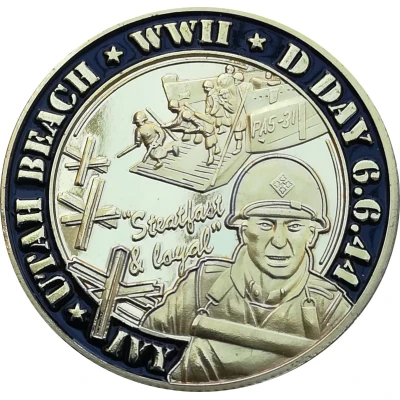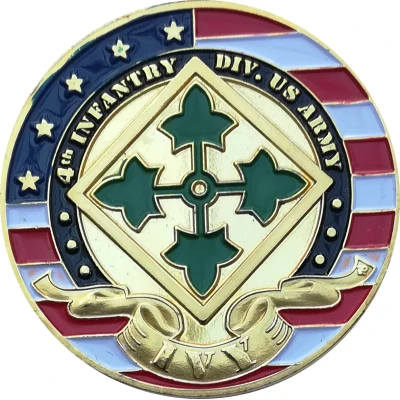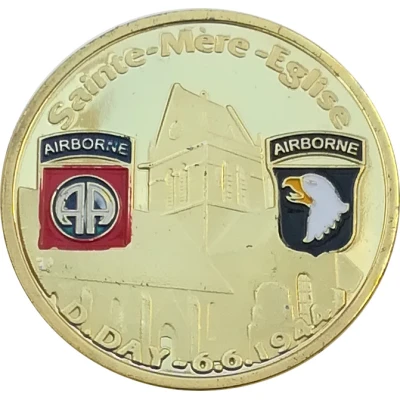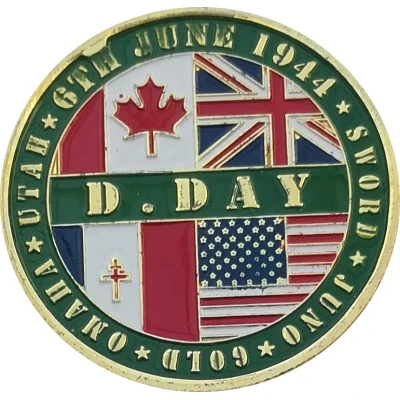


© PLH28 (CC BY-NC-SA)
Jeton touristique - Prune - D-Day 6.6.44 - 4th Infantry Division U.S. Army ND
| Steel | 14.71 g | 32 mm |
| Location | France |
|---|---|
| Issuing entity | Prune |
| Period | Fifth Republic (1958-date) |
| Type | Medals › Commemorative medals |
| Composition | Steel |
| Weight | 14.71 g |
| Diameter | 32 mm |
| Thickness | 2.5 mm |
| Shape | Round |
| Technique | Milled, Coloured |
| Orientation | Medal alignment ↑↑ |
| Updated | 2024-11-12 |
| Numista | N#295579 |
|---|---|
| Rarity index | 93% |
Reverse
Green colorized badge of the 4th Infantry Division of the United States Army nicknamed Ivy on an American flag background. Different from Prune at 4 o'clock in the ribbon.
Script: Latin
Lettering:
. . . 4th INFANTRY DIV. US ARMY . . .
IVY
Edge
Reeded
Comment
The expression D-Day, already used by the military in preparation for the offensives at the end of the First World War, now designates Tuesday June 6, 1944, the first day of the Normandy landings, marking the start of the Battle of Normandy in the Second World War. Https://en.wikipedia.org/wiki/Jour_JOn June 6, 1944, the first day of the Normandy landings, the 4th Infantry Division landed on Utah Beach under the orders of its second-in-command, General Theodore Roosevelt Junior. The son of the former American president, he was the highest-ranking Allied officer to land in an assault wave on D-Day, despite his age (57) and the arthritis that forced him to use a cane. The landing was marked by a mistake on the arrival beach: the division was landed one kilometer off course due to sea currents. This error proved to be beneficial, as this part of the beach was less defended. The capture of Utah beach was much less bloody than that of Omaha: "only" 200 soldiers of the 4th US Infantry were reported killed, wounded or missing on the evening of June 6. https://fr.wikipedia.org/wiki/4e_division_d%27infanterie_(%C3%89United States)



